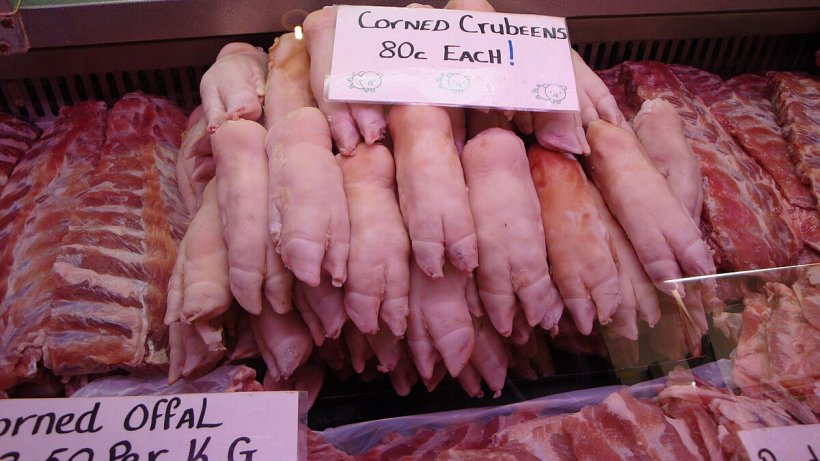On 2 March 2025, US President Donald Trump, announced ‘reciprocal tariffs’ across a number of global trading partners, commencing 5 April 2025. The UK was hit with additional 10% tariffs on all exports to the US, meanwhile many other nations were served with higher rates, such as the EU at 20%, South Africa at 30%, and Vietnam at 46%.
However, on 9 April 2025, he announced a 90 day pause on the higher rate tariffs, introducing a universal minimum tariff rate of 10%, exclusive of China, where tariffs were further increased. There are some product exemptions from the tariffs, for example pharmaceuticals and microchips.

Impact in UK-US pork trade
The UK does not have a preferential trade deal with the US, so until now UK exports have been subjected to the default ‘most favoured nation’ tariffs. For pig meat these tariffs are quite low, varying from no tariffs for carcases and half-carcases to 1.4 cents per kg for pork cuts and hams. With the recent changes, all product from the UK will have to incur additional +10% tariff rates. This will make UK exports more expensive to US buyers, which may lead to reduced shipments.
However, as outlined in the Prospects for agri-food report and recent US enforced laws such as proposition 12, there is good demand from US consumers for higher welfare products. Production systems in the UK differ significantly to the US and are well placed to meet these new welfare specifications and consumer preferences. Whilst a rising price for products from the UK is unhelpful, it is likely any drop in demand would be limited. If all of the increase is passed onto consumers, a 10% rise would be within the general fluctuations seen in commodity markets and exchange rates. Therefore, UK product should remain affordable to many of the, generally more affluent, consumers of higher welfare products.
On 8 May 2025, an Economic Prosperity Deal between the UK and US was announced which aims to strengthen economic ties between the two countries by increasing market access and reducing tariffs in order to benefit many sectors including steel, automotive and agriculture. We await to find out the finer details with pork not specifically mentioned in the announcement but not off the discussion table.

What are the likely impacts of the USA-China trade war on the pork industry?
Since Donald Trump’s first term in the oval office as president of the United States of America back in 2017, the relationship with China has soured. Trump has increased import tariffs on Chinese goods multiple times, starting with section 301 tariffs (25%) introduced in 2018, but these have been significantly ramped up in recent weeks, the latest round of modified reciprocal tariff rates stood at 125% as of 10 April 2025. China has retaliated by imposing similar tariffs back onto the USA. On May 12, trade officials from the United States and China announced that the U.S. will, for a period of 90 days, reduce tariffs on Chinese imports from 145% to 30%, with China agreeing to reduce retaliatory duties from 125% to 10%.
Both the USA and China are significant players in the global pork industry.
Using three-year averages (2022-2024), the USA ranked in the following positions by volume:
- Second largest exporter 2.4mil T
- Third largest producer 12.4 mil T
- Seventh largest importer 0.5mil T
Meanwhile China ranked as follows:
- The world’s largest producer 56.7 mil T
- The world’s largest importer 2.5mil T
- Eighth largest exporter 0.1mil T
The USA is the largest supplier of pig meat into China, behind the EU27. China imports around 400K T of pig meat from the USA annually, over 70% of this volume is made up of offal.
Opportunities
Increased tariffs will increase the cost of USA product into China, which is likely to lead to buyers turning to alternative sources. The main beneficiaries of this may be the UK, Europe, Brazil, and Canada, all of which are accounted for in the current top five suppliers list.
From a UK perspective, traders currently have good market access to China for muscle meat but more vitally also for offal. Annual pig meat volumes shipped from the UK to China average 120K T (2022-2024), 44% of this is made up of offal. There is potential for the UK to ship more offal to China as import demand continues to grow and UK pig meat production trends higher, taking market share away from the USA. The re-listing of two plants in December 2024 also provides a welcome boost to industry.
Risks

The volume of pig meat imported to China from the USA is likely to substantially fall at current tariff rates. As the majority of this product has no domestic market, it would be displaced into other markets with more favourable trading conditions.
The USA already has good market access for offal into Mexico, the Philippines, South Korea, Japan and Vietnam. It would be expected that much of the displaced product from China would be re-directed into these markets.
For the UK, this would create further competition within established export markets such as the Philippines, South Korea and Japan and potentially limit the UK’s scope in newly opened markets such as Mexico and Vietnam. Especially given the higher price point of UK product in comparison to USA.
The displacement of product also risks pressuring prices downwards. If alternative markets for all USA exported product cannot be found, the value of this product will fall. This is likely to have an impact on other marketplaces as there will be surplus of supply for those products globally, outside of China. This lower product pricing would then be factored into farmgate prices as the value add of exports to processors is lost and they would need to cover disposal costs for the unwanted pig meat.


